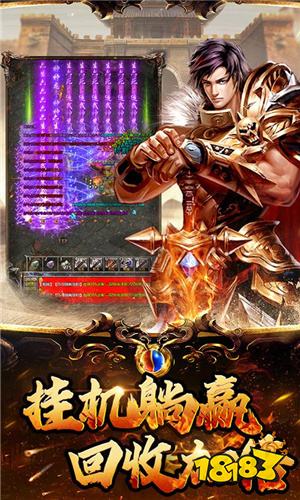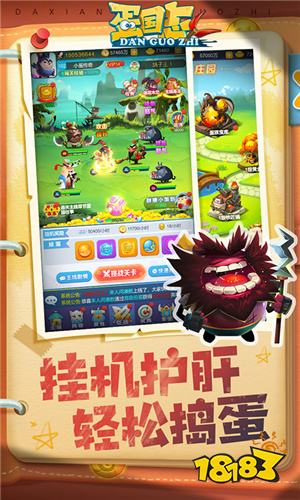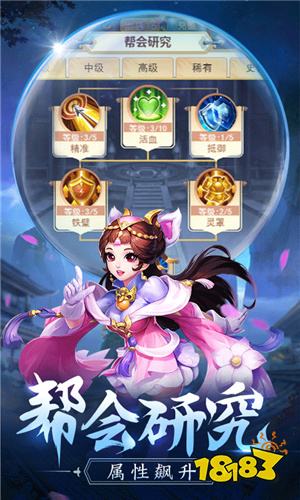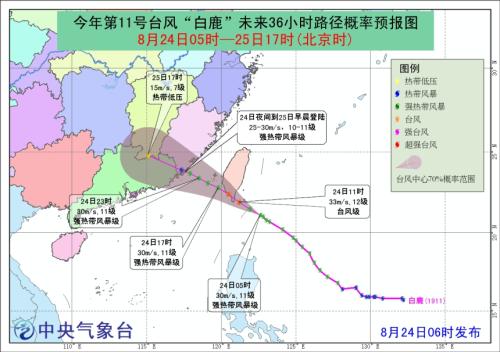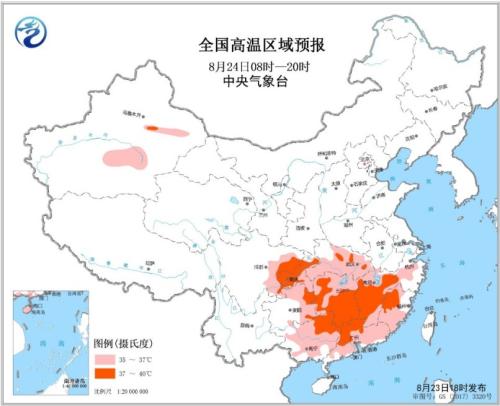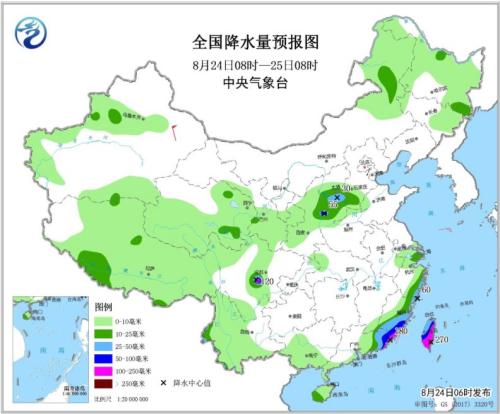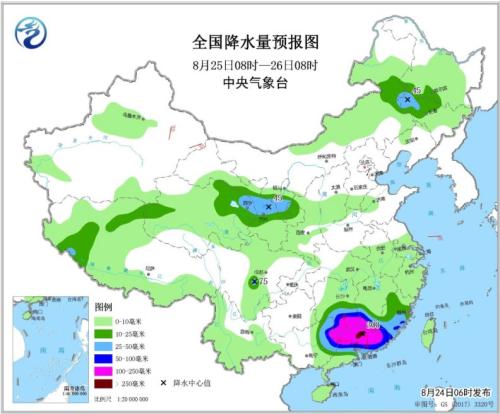Shaoxing, an ancient city, is famous in China’s art history. In the past, Xie Wang’s brilliant humanity, brilliant art and intensive research methods created by his outstanding talents in this beautiful mountain and beautiful water have been passed down in Shaodi, and outstanding talents have emerged. Although Wang Mian’s Mo Mei, Xu Wei’s freehand brushwork of flowers and birds, Chen Hongshou’s ancient figures and Zhao Zhiqian’s stone seal cutting are the most praised, from the perspective of painting, figures, flowers and birds, especially Mei Zhu, are also the works; However, if we examine the history of painting carefully, we can see that the creation of landscape painting has a long history. Among them, Wang Kui’s paintings in the Eastern Jin Dynasty, such as Qi Ping Map of Villages, Mao Huixiu’s Painting of the Village Market in the Middle Valley, and Dai Kui’s Painting of the Residence of Xishan in Wuzhong, are all landscape paintings or paintings with landscape elements.
The forest valley in Huiji wins in the southeast, and the new pavilion is also strong.
The dense trees don’t know where the clouds are, and the deep mountains often hear the noise of water.
Quiet and secluded, fishing and firewood can be hidden, and there is no Wang Xie to enjoy the tour?
I want to pursue Li Du with a poem, but romantic is not a talent.
Although this poem by Wang Mian, a famous poet and painter from Shaoxing in Yuan Dynasty, is only a few tens of crosses, it is full of rich connotations of Shaoxing’s landscape and humanities, and it also writes the shadow of Shaoxing’s art culture. The trees are dense, the mountains are deep, the water is clear, and the scenery is quiet. The victory of the water and nymphs in Huiji Mountain has lasted for thousands of years. In the past, the brilliant humanities, burning skills and intensive research methods created by the Xie Wang family in this beautiful mountain and beautiful water have been passed down in Shaodi, which makes people respect and remember; The water and soil of such a lush landscape and flourishing humanities are naturally crouching in the tiger, with abundant morale, and the generation of talented people is beyond it. The author of this poem, Wang Mian, is the one in Jiao Ran; However, his poor fortune and ill-fated career made him feel sorry for himself, and it also became a common lament of many Shaoxing scholars.
Wang Mian’s "Painting the South Branch in the Spring Morning" is collected in the National Palace Museum in Taipei. Today, we comb back Shaoxing’s fine arts culture and see all kinds of landscapes, humanities, morale, family studies and talents sung in this poem, and how many bumpy lives, unyielding struggles and proud spirits. They converge into a regional tradition interwoven with nature and humanity, and nourish the vigorous growth of the tree of art with the power of culture. At the same time, art also weaves colorful chapters of regional culture with its rich inspiration.A regional cultural tradition in the development of fine arts education.
Shaoxing’s historical and humanistic prosperity provides excellent cultural fertile soil and humanistic nourishment for the development of art culture. Shaoxing’s regional culture is integrated and implied in the creative ideas, artistic characteristics and spiritual pursuit of Shaoxing’s fine arts, which shows the myriad weather of Shaoxing’s fine arts culture.
1. Mountains and rivers and arts reflect the development.
Shaoxing is deeply loved by nature, and is blessed with beautiful mountains and rivers, such as Huiji Mountain, Tianmu Mountain, Gai Mountain, Dongshan Mountain, Wozhou Lake, Jianhu Lake, Tunxi River and Caoejiang River. Walking along the mountain, even in winter, the greenery of the mountain can still be described as "lush". And the clouds filled with water vapor are often like misty rain, dyeing a picture of sky blue. Rolling hills, moss-covered slopes, self-flowing streams, tall and straight ancient trees, empty mountains with birds singing and quiet leaves falling, all show vigorous vitality in the nourishment of nature, accumulating great life energy and creative power and beauty.
"There are no clouds in the mountains, like spring without flowers and plants. Mountains without clouds are not beautiful, without water, they are not charming, without roads, they are not alive, without trees, they are shallow, without horizon, they are near, and without lofty heights. " Therefore, "the mountain takes water as its blood, vegetation as its hair, and smoke clouds as its color, so it lives with water, grows with vegetation, and is beautiful with smoke clouds." Ancient China, rich in landscape culture, had a very high standard of tasting natural mountains and rivers. Guo Xi, a landscape painter in the Northern Song Dynasty, expressed the perfect artistic landscape form in the artist’s mind. Shaoxing’s mountains are full of beautiful mountain scenery. Shan Lan is floating, with lush trees, rugged rocks and clear streams. Its lush, fresh, empty and graceful temperament is a model of artistic landscape.
Shaoxing mountains and rivers are not only natural and beautiful, but also have profound cultural implications. They are "interesting and spiritual" and full of interest, which is enough to make "saints contain Tao and things, and sages are sincere and tasteful". Attracting scholars, calligraphers and painters of past dynasties to wander around the overlapping peaks and forests, building a room to live, "living in seclusion, playing the piano, wearing a beautiful picture, sitting in the four wastes", letting go of the scenery, splashing ink, and understanding with the natural mountains and rivers, integrating nature with man, and enjoying the same glory through the ages.
(1) Mountains and rivers gave birth to an era of flourishing arts and crafts.
During the Eastern Jin Dynasty, the famous families in Huiji, such as Wang Xizhi’s family, Xie An, Xie Xuan, Xie Lingyun’s family and Dai Kui’s family, were all artistic families who lived in seclusion and shared the same spirit with Lin Quan. The elegant collection of Lanting, which has been handed down from generation to generation, also started from mountains and mountains, bamboo cultivation in Maolin and turbulent flow. Take the Xie family as an example. From Cao Wei in the Three Kingdoms, it became a bureaucratic family, and developed into a leading noble family in the Jin Dynasty, with a large number of celebrities. Xie An, who was the prime minister at the time of Emperor Wu of Jin Dynasty, made a name for himself in history by the battle of Fei Shui. He was natural and unrestrained, liked to visit mountains and rivers, and lay high in Dongshan, where he was good at poetry and calligraphy. Xie Lingyun is a pioneer of landscape literature, but also a painter who indulges in landscape travel. According to Tao Zongyi, a Huiji person in the Qing Dynasty, the paintings of Xie Lingyun include two-walled bodhisattvas in Kanroji, western Zhejiang, with six pictures. Xie Huilian, the younger brother of Xie Lingyun, is also a talented boy who is good at painting and writing. Dai Kui’s father and son lived in seclusion in Huiji, and devoted themselves to art, which was called by later generations as "a seclusion, and the high wind vibrated in Jin and Song Dynasties." Although Dai Kui was born in the gentry, he was an official all his life. After middle age, he lived in seclusion in Huiji County (now Shengzhou, Zhejiang Province). The imperial court recruited many times, but he refused because of "father’s illness" or other reasons. Therefore, in the biography of the Book of Jin, it was listed as "seclusion". Dai Kui’s sons, Dai Bo and Dai Qing, are also hermits, and they can’t get it, but they "pass on their father’s piano books." Dai Qing "loves the secluded stream for the longest time", "hides in the nymphs, and can’t afford it again and again" and "paints landscapes".
Dai Kui in the ancient block-printed edition will remember the symphony of mountains and rivers and art at that time, which is still admirable. An elegant collection of groups of scholars, such as Lanting assembly; There are also discussions between two or three sons, such as Xie An and Dai Kui’s talking about piano and painting; And Wang Xianzhi roaming in the mountains, "from the mountain, mountains and rivers set each other off, make people overwhelmed. If it’s autumn and winter, it’s especially hard to miss "; There is also the landscape painting meaning of Pingyuan composition in Xie Tiao’s poems such as "You Shan" and "Winter Night County Gap"; Even more, on a snowy night in Wang You, I visited the celebrities who "came on the spur of the moment and returned after the excitement". Such a rich atmosphere of artistic life makes artistic talents flourish and artistic treasures shine brightly. The calligraphy works of Wang Xizhi and his children, the calligraphy and painting theories of Sheikh and Wang Biao, and the Buddhist sculptures and paintings of Dai Kui are all treasures in the art history of China, which have enriched the treasure house of China.(2) Landscape is accompanied by the historical track of landscape painting art.
Ming Xu Wei’s "Ink Peony Map" is collected in the Palace Museum.
Xu Wei’s "Ink Grape" is hidden in the history of Shaoxing painting. Although it is most praised by Wang Mian’s ink plum, Xu Wei’s freehand brushwork of flowers and birds, Chen Hongshou’s ancient figures and Zhao Zhiqian’s stone seal cutting, from the perspective of painting, it is also written by figures, flowers and birds, especially Mei Zhu. However, if we examine the history of painting carefully, we can see that the creation of landscape painting has a long history. During the Eastern Jin Dynasty, Wang Kui painted a picture of the village community, Mao Huixiu painted a picture of the village ruins in the middle of the valley, Dai Kui painted a picture of the residence of the Xishan Mountain in Wuzhong, and Dai Bo painted a picture of the famous mountains in Kyushu and a picture of the clouds and the moon, all of which were landscape paintings or paintings with landscape elements. Among them, Dai Kui, as a pioneer in the founding period of landscape painting, was highly praised by Zhang Yanyuan, calling his landscapes "wonderful". "Shi Shuo Xin Yu Qiao Yi Pian" recorded: "Gu Changkang painted Xie Youyu in a rock, and people asked him why, and Gu Yue said,’ Xie Yun: a hill and a gully, calling itself a river. This child should be placed in a gully. " "Reflects the combination of characters and landscapes. During the Southern Song Dynasty, Lin Junmin, a court painter, was good at painting landscapes, and Zhou Jue, a painter in Shaoxing, was also famous for painting water. Wang Dijian in the Yuan Dynasty, Yang Weihan, Chen Zongyuan, Wang Siren, Qi Zhijia, Yao Yunzai, Zhu Nanyong, Mao Chong, Tao Su, Wu Zhonghuang, Zhang Erbao, Zhu Qingchen, Liu Peng, Wang Yuan Dao, Zhao Zhongrong in the Ming Dynasty, Zhang Zhenyue, Jiang Tinggan, Zhang Xueliang, Shi Hongyu, Wang Yuqian, Shi Biyun and Feng Xianyu in the Qing Dynasty.
Chen Hongshou Jinjue Atlas (3) Landscape nourishes the artist’s artistic inspiration and accomplishment.Natural "enrichment" from high-quality landscape resources is a unique life wealth and artistic nutrient for Shaoxing painters. In this beautiful mountain and beautiful water, they pick up the world, realize the world and life, send boundless feelings, nourish their tired bodies and minds, observe the prosperity of all things, follow the shadows and reason into the shadows, and make poems and paintings. The form and meaning of landscape are deeply rooted in their thoughts and emotions, and become the structural elements of their knowledge, endowment and aesthetics.
Wang Mian’s poems have various styles, except for the simple, sincere, heroic and magnificent style with the theme of loyalty to the monarch and love for the people, eliminating evil and pulling out evil, and there are also many works that express feelings and feelings. Such as "Yunmen Mountain Map": "Less than 10 years in yunmen temple, I suddenly saw Ruoyexi going up the mountain. The fallen leaves don’t go with the running water, and the long pine is only among the white clouds. In those days, Xie Wang was lonely, and the nymphs went even further. I am glad that the two spirits are full of qi, and when I help the quinoa, I will knock on the firewood again. " The second part of Manxing: "The sky is full of green and gloomy clouds, and the snow waterfall invites you to fly to the distant cen. Double cranes dance on a white moonlit night, and listen to Wan Songyin in the breeze. You can learn from poetry and wine, and there is no need to talk about ancient and modern times. I want to fly with you, and the poems are carved all over the mountains. " Others, such as Book on the Lake, Linhe Pavilion, Village Residence and Zhuxi Xuan, all take beautiful mountains and beautiful waters as the scene, depicting the image of a hermit who enjoys himself in the pine and bamboo groves, and depicting the poetic landscape of Wan Li with a thousand years of white clouds and a cool breeze, which is not only the place where he cultivates his sentiments, entrusts things and sends his feelings, but also the place where his artistic inspiration originates.
This kind of character, which coexists with natural mountains and rivers and regards it as spiritual home and artistic habitat, can be said to be everywhere among Shaoxing painters. Chen Hongshou has written many unique landscape poems, such as "Fortune": "A thousand years of longevity vines cover the grass. Its flowers are four photos, and Bei Jin is not as good as it. A guest stopped me, and a pot flowed. On the Huanhua River, the ancients came first. " "Making Tree Stones and Uncle Yuan Lu": "Lying in the mountains in late autumn, I never stop. Sit quietly, drink less, and brush your pen and ink slightly. Make a tree, not a mountain, and look far-reaching. This comes from stillness, otherwise it can’t be done. The income must be quiet, and the view can be proved. " "On the Mountain Yin Road": "It’s sunny today, and Qian Shan looks extravagant. I also smell the bird and see the acacia flower. Light rain to clear the air, cool wing car. When writing a new sentence, the scene is painted with Wu Sha. " There are friends and friends in the mountains, flowers and plants, and more idle windows to sit alone and sing in the mountains. He lived in this mountain, meditated, studied painting theory, and made a good arrangement. Xu Wei’s landscape poems, on the other hand, have a heavy feeling of boundless thoughts, saturated with unyielding and struggling things. His poem "Send Shen Shucheng": "Jishan is beautiful and delicious, but it is difficult for a dutiful son to be loyal to a minister. Ten years of ice and snow are still there, and the wind and dust are all over. The green mule is warm in spring and plum blossoms, and the red rain is cold in the cypress tree. I want to borrow Bo Fu’s three-foot hand, and I want to turn over the silver man to wash the world. " This poem was written by Xu Wei in prison for Shen Xiang, a fellow painter of Mo Mei, remembering his unyielding involvement in his father’s injustice for ten years, and remembering his friendship of visiting in prison. The long road of life is full of snow, ice and dust, the world is sinister and the fate is ill-fated, and the beautiful mountains and rivers in their hometown will always be the common background and starting point of their lives.
2. Context casts artistic soul
Shaoxing has a long history. In the history, Dayu succeeded in controlling water. In Maoshan, he gathered governors to reward him for his merits. After his death, he was buried in this mountain. Because he was renamed as "Huiji" in Maoshan, the name of Huiji came from this. During the Spring and Autumn Period, the Yue people established Yue country around Shaoxing today and became one of the countries in the Spring and Autumn Period. Since Gou Jian, King of Yue, chose this place as the capital of Yue in 490 BC, the site of the ancient city has not changed, and the pattern has continued to this day. At the beginning of the Warring States Period, the King of Yue, Ju Jian, defeated the State of Wu, and the territory of Yue gradually expanded to the Jianghuai area. In the twenty-fifth year of Qin Shihuang (the first 222 years), he decided to set the south of the Yangtze River, descended to Yue Jun, and set up Huiji County to lead more than 20 counties to govern Wu (now Suzhou). In the 4th year of Yongjian in the Eastern Han Dynasty (129), Huiji County was divided into Wu County and moved to Shanyin, leading to 14 counties including Shanyin in Zhejiang. In the 9th year of Emperor Kai of Sui Dynasty (589), Kuaiji County was changed to Wu Zhou. In the first year of Daye (605), Wu Zhou was changed to Yuezhou, which was the beginning of the name of Yuezhou. In April (1130), the fourth year of Jianyan in the Southern Song Dynasty, Song Gaozong was stationed in Yuezhou, taking the meaning of "the grand rest of Shao Yi Shi and the prosperity of a hundred years". In the following year, Shaoxing was renamed as Shaoxing, and in October of the first year of Shaoxing (1131), Yuezhou was promoted to Shaoxing Prefecture, which was the origin of Shaoxing’s name. In the 13th year of Yuan Dynasty (1276), it was renamed Shaoxing Road to govern Shanyin. The Ming and Qing Dynasties were restored to Shaoxing Prefecture. Up to now, Shaoxing covers an area of 8,279 square kilometers and governs Yuecheng District, Keqiao District, Shangyu District, Zhuji City, Shengzhou City and Xinchang City.
(1) the infiltration of academic thought
As a famous historical and cultural city with a history of 2,500 years, Shaoxing has a developed economy, rich people’s livelihood, respect for education, farming and reading, and continuous succession. In the Eastern Han Dynasty, Wang Chong set up a school to teach students, which was the beginning of running a school in China. Fan Zhongyan set up government schools in the Northern Song Dynasty, connecting the preceding with the following. During the Ming and Qing Dynasties, Shaoxing government ran 46 academies, and it became a common practice for private schools to raise funds for social studies, voluntary studies and private schools. Zhu Xi lectured at Jishan Academy, Lv Zushan lectured at Lumen Academy in Shengzhou, Wang Shouren lectured at Yangming Academy, Liu Zongzhou lectured at Jishan Academy, and Cai Yuanpei took charge of teaching the government middle school, and hired famous teachers to preach and dispel doubts. The whole society "the sound of string chanting is better than the sound of house hearing" and "down to penghu, I am ashamed not to discipline my son with poetry and books." Since merchants are unfamiliar with chapters and sentences, they are also literate. " According to statistics, from the Tang Dynasty to the Qing Dynasty, there were 1965 people in Shaoxing who were admitted to the civil service, and 273 people were admitted to the military service. In the imperial examinations of past dynasties, there were 46 people in Sandingjia (including registered students), including 27 who won the first place, 10 who won the second place and 9 who explored flowers. "The prosperity of Confucianism will be recorded, and it will be crowned in Dongzhou."
With the development of economy and culture and education, Shaoxing has developed academically, rich ideological resources and a large number of cultural celebrities. Wang Chong, Wang Yangming, Liu Zongzhou, Zhang Xuecheng, Ma Yifu, Cai Yuanpei, Lu Xun, etc. are all great academic thinkers, and their philosophies are brilliant, enlightening, inspiring, and inspiring.
With the academic spirit of seeking truth from facts, Wang Chong, a philosopher in the Eastern Han Dynasty, severely criticized and criticized the wind of spreading false superstition and confusing people with empty theories at that time, corrected the shortcomings and rumors, embodied the rational spirit of seeking truth from facts and challenging authority, set a benchmark for future generations to criticize and innovate and advocate practical results, and had a far-reaching impact on the history of China’s ideological and cultural development. He was evaluated by Hu Shi as "one of the greatest philosophers in ancient China."
In the Eastern Jin Dynasty, Wang Xizhi, Xie An and other scholars in Wei and Jin Dynasties advocated nature, detached themselves from things, were free and easy, broad-minded, clear-minded, handsome and versatile, and faced the turbulent times of "the east wind shakes a hundred herbs" with the style of celebrities and the spirit of seeking Tao. They are talented, handsome, creative and excellent. The awakening of individual consciousness, the conflict of ethical concepts, the exploration of life philosophy, the contemplation of life and death, the pursuit of faith in Taoism and Buddhism, the natural return of mountains and water, and the aesthetic transcendence of truth and goodness endow his works with profound ideological connotation and converge into the cultural charm of an era.
Lu Yousheng, a litterateur in the Southern Song Dynasty, was ambitious and devoted his life to serving the country generously. He embraced the patriotic spirit of "being humble and not afraid to forget about the country" and urged him to resist gold and recover the Central Plains, but he was repeatedly frustrated. His poetry works are full of passionate and generous patriotic enthusiasm and unfulfilled sadness and indignation. Jiading died in the second year of the Southern Song Dynasty (1210), and he still left the poem "Show Your Son". "When you die, you know everything is empty, but you can’t see Kyushu." Julian Waghann set the Central Plains Day in the north, and the family sacrifice did not forget to tell Nai Weng. " Showing unswerving determination to resist gold and ultimate concern for the fate of the motherland. Liang Qichao once wrote a poem praising the cloud: "The poetic world has been decadent for thousands of years, and the soldiers and souls have been exhausted in soul of china. Concentrate on nineteen military music, and the ancient men will release the Weng. "
Wang Shouren, a thinker in the Ming Dynasty, named himself "Yangming Zi", advocated rational freedom and human liberation, emphasized that "mind is reason", and put forward philosophical views such as "unity of knowledge and action" and "to conscience", thus creating Yangming’s mind theory. His academic thoughts have won great fame and influence so far, and even spread to Japan, the Korean Peninsula and Southeast Asia. Huang Zongxi believes that "since Confucius and Mencius, there has been no such person who is deeply enlightened." Wang Shizhen praised him as a "first-rate figure in Ming Dynasty, who was outstanding in virtue, contributions and opinions".
As the founder of the New Literature Movement and the main commander of the May 4th New Culture Movement, Lu Xun dared to face up to the bleak life, exposed and criticized the feudal ethics and system of cannibalism violently, and waged an indomitable struggle. Courageously taking social criticism and civilized criticism as his own responsibility, he made tenacious struggles and efforts with his whole life’s energy and independent personality, adding unyielding character, independent personality, critical spirit and the idea and courage to blaze a new trail for Shaoxing cultural tradition, which not only opened a new trail for China culture, but also left a valuable ideological wealth for the people in his hometown.
(2) Consciousness of subject spirit
Along the historical process of Shaoxing fine arts culture, from Wang Mian, Xu Wei, Yang Weizhen, Chen Hongshou, Zhang Dai, Zhao Zhiqian and others, we can clearly see the life track of being intelligent, arrogant, arrogant and ill-fated, showing the subjective consciousness of publicizing self-personality, attaching importance to personal values and pursuing spiritual freedom. Like Xu Wei, Wang Mian refused to take the exam several times, which was out of the traditional official career of "learning to be an excellent official": "This ambition was actually depressed, and the clothes were mixed with mud. After 30 years of trampling, I am as decadent as a squid, and even "returning to farming without an inch of land, returning to grazing without feet and straw, holding back the duckweed stalks, sighing at the clouds and sky, and being vulgar and contemptuous of me, so I used to laugh at my stupidity." This experience has caused him to be similar to Xu Wei in Geng Jie’s arrogant personality and act differently from ordinary people. In the Biography of Zhu Zhai, written by Song Lian in the Ming Dynasty, he once recorded Wang Mian’s madness: "The historian said: When I saw Meng Caiyan, the more crazy I was, the snow fell that day and I went barefoot to Yue Feng, and I looked around and shouted,’ All over the world, white jade was synthesized, which made people feel clear, and they wanted to die.’ And into the city, wearing a big hat, such as bamboo, wearing a mop, dancing, two porch, laughing and overflowing the city. I doubt him very much, and the interviewer asks him, that is, the crown is also. The crown is really crazy! "At the same time, Song Lian praised Wang Mian’s maverick, saying that" a horse without a horse is not enough to see its wizards, and a crown is also a husband! " Behind the madness, in essence, are the pain of "my heart is bitter and my feelings are depressed" and the sadness and helplessness of "what should I do in my life"
The cultural causes are influenced by academic thoughts, and Chen Hongshou, Qi Zhijia, Wang Yuqian and other "Ten Scholars of Yunmen" submit to the Jishan School in Liu Zongzhou. There is infiltration of poetry and opera, and Xu Wei, Chen Hongshou and Qi Biaojia either concentrate on opera creation, or draw opera prints, or focus on the theoretical research of opera, and poetry creation is even more unusual; Sticking to the principle of righteousness and integrity, Wang Siren wrote down the eternal famous saying that "the more I am, the more revenge I am, not a place to shelter evil people", and died with Qi Biaojia and Ni Yuanlu when the country perished and broke in the Ming Dynasty.
The fundamental reason why Yang Weizhen’s calligraphy banquet is proud of Dong Xuan’s poems is closely related to the spiritual elements of seeking truth, being pragmatic, critical and innovative, and advocating practical results formed in Shaodi since Dayu’s flood control and Wang Chong’s Lun Heng. The more direct influence is related to Wang Yangming’s psychology to a great extent. Some scholars have done in-depth research on this: "In the Ming Dynasty, monarchical power was extremely important, and only by upholding moral subjectivity could scholars adhere to the orthodoxy. However, in the neo-Confucianism system of Cheng and Zhu, the Confucian orthodoxy was centered on loyalty to the monarch, which made the scholars who disobeyed the monarch not only suffer heavy blows in reality, but also have great psychological tension. In this context, Wang Yangming put forward the theory of "To Conscience" in the middle of Ming Dynasty, emphasizing the unity of knowing and doing, and promoting spiritual subjectivity and practical subjectivity, which not only integrated Lu Xiangshan’s theory of mind with the theory of doing things in eastern Zhejiang, but also built a new system of mind, and broke the spiritual shackles of Cheng Zhu’s Neo-Confucianism for scholars and opened a new ideological world. Its influence is not limited to Wang Men’s later learning in the ideological field (including Liu Zongzhou and Huang Zongxi in later generations), but also in the field of literature and art. For example, the two most outstanding Zhejiang painters in the Ming Dynasty, Shanyin Xu Wei and Zhuji Chen Hongshou, have a great relationship with Wang Xue’s influence in their life and artistic style. "Wang Yangming himself was less heroic and uninhibited, and when he was old, he appreciated the "mad man" from the perspective of "acting according to his conscience": "The mad man has the ambition of the ancients, and all kinds of vulgarity are not enough to tire his heart. It really means that the phoenix is dry, and one gram of thoughts is a saint. But you can’t read, so you don’t know anything, but you often don’t hide it. But the line is not hidden, so the heart is not bad but can be cut. " And analyze myself from this: "I have been in Nanjing, and I still have the meaning of homesickness." Nowadays, only believing in conscience is really wrong, and there is no hidden protection, so people are crazy. Let the world say that I do not hide my words, and I will only act according to my conscience. " Wang Yangming’s thought has a universal and profound influence on the literati in his hometown. Take Xu Wei as an example. He once became a disciple of Yangming from Ji Ben and Wang Ji, and was deeply infiltrated by Wang Xue.
All these have injected abundant humanistic factors into Shaoxing fine arts, and cultivated artistic taste and innovative artistic creativity.
2. Art creation in the shaping and construction of regional traditions
Shaoxing fine arts, on the other hand, convey the most spiritual emotion and creativity for Shaoxing regional culture, become an important component of Shaoxing cultural tradition, shape its internal structure and quality, and make great contributions to creating Shaoxing’s regional characteristics, cultural feelings and traditional pattern.
1. Aesthetic implication cultivates abundant morale.
Shaoxing, known as the cradle of humanities, has been known as the "hometown of celebrities" because of its talented people in successive generations. When Yuan Hongdao, a famous writer in Ming Dynasty, first arrived in Shaoxing, he was deeply impressed by "Shiduo": "I heard about Shanyin County, and it’s only now that I’ve been here. The boat is small, and there are more men than crucian carp. Gather mountains like cities, and make light and water like Luo. Everyone drinks old wine and only sings Wu Ge less. " In 1961, Mao Zedong also wrote a poem "The Town of Celebrities" for this purpose: "Jianhu crossed the famous town of Taiwan, and the sorrow was heartbroken for the country, and the southern song was sung by the autumn wind, and one case was immersed in poetry."
The characteristics of "Shi Duo" are also vividly reflected in Shaoxing art history. In the history of Shaoxing art, there are many painting and calligraphy artists who are based on humanistic education and participate in artistic creation as literati. The discussion of classics and history, poetry criticism and calligraphy creation between them are not only the interactive exchange of art and literature, but also the flourishing meeting of spiritual ideas, temperament and interests and aesthetic consciousness. Moreover, they have imbued the aesthetic culture with artistic spirituality and implication, which has improved Shaoxing’s "morale" and regional cultural traditions. The artistic communication between the gentry with Xie Wang family as the core in the Eastern Jin Dynasty, the artistic romance represented by Zhang Dai family in the late Ming Dynasty, and the friendship between friends and friends in Zhao Zhiqian in the Qing Dynasty were all gloomy and full of morale. Ni Yuanlu, Wang Siren, Qi Biaojia and others sacrificed their lives for justice and died for the country, which is the awe-inspiring practice of traditional scholars’ noble sentiments and loyalty, and they are impressive in history. All of these can clearly see the contribution of Shaoxing artists’ arts and crafts to Shaoxing’s character and local fashion. In Shaoxing, family learning and learning from teachers are two important paths to inherit Shaoxing’s artistic vein. In the field of calligraphy and painting, Wang Xizhi’s family, Xie An’s family, Dai Kui’s family, Chen Hongshou’s family, Zhang Dai’s family, Qi Biaojia’s family, etc. are all well-known artistic families. However, the inheritance of Wang Xizhi’s calligraphy and Chen Hongshou’s painting art in artistic concepts, techniques and styles has gone far beyond the family, times and artistic fields, and has been continuous from generation to generation, becoming the creators and maintainers of regional context.
2. Talent clubs will cultivate regional quality.
Shaoxing has a prosperous culture and education, a long artistic vein, and under the influence of the times, people with profound knowledge and versatility, such as exotic branches and exotic flowers, are born with great enthusiasm, and with their talent, education and talent, they have become a beautiful scene of Wenjiang learning, poetry, painting and calligraphy. Wang Mian, who is well-known for writing ink and plum blossoms, also started the style of literati seal-printing with Hua Ru Shi, with paintings in poems and poems in paintings as his distinctive features. His poems in Mo Mei’s paintings are well-known, and his poems are also full of paintings. Wang Mian has a pair of "painting eyes" cultivated by the baptism of painting art, so what he sees and loves in his poems is all deeply picturesque: "There are mountains and rivers everywhere, like painting, and Taoist people live here." This kind of poems with the theme of "painting", which are observed by his painting eyes, can be seen from time to time in his poems, forming an artistic style of combining poetry and painting. For example, "Landscape Map" wrote: "I love to see real landscapes, and I am familiar with my eyes. No valley lies in the clouds to stay in the rain, and the high forest floats out of the clear haze. Green hills are closer to houses than clusters, while white stones are as small as locusts. The exhibition volume is doubly embarrassing, and the apricot blossoms and spring rains are separated from the south of the Yangtze River. " "Bamboo Map" wrote: "The autumn wind in Chu is strong, and the night rain in Xiangjiang River is deep. Don’t watch the double phoenix dance, just listen to the old dragons. Honesty and lofty festival, cold with my heart. Long Xiang Jing, turn around and recall Shanyin. " There are other pictures, such as "Hidden Scenery of Jiangshan Fishing", "Fanniu Picture" and "Narcissus Picture", which are a blend of scenes, poetry and painting. I hardly know whether it is a true landscape or a middle scene.
China’s ancient cultural tradition and the cultivation of classical intellectuals all attach importance to the comprehensive study, cultivation and communication of epic documents and paintings; The important characteristics of ancient literati painting art lie in the unity of painting and calligraphy, poetry and painting, and even the four beauties of poetry, painting and calligraphy. Shaoxing artists grew up according to this academic system, which not only benefited a lot, but also contributed a lot to it. Wang Xizhi’s Preface to Lanting Collection, which is excellent in literature and books, is famous in the history of Qing Dynasty. Dai Kui is good at both sculpture and painting. Lu You and He Zhizhang are not only poets, but also calligraphers. Xu Wei’s poems, books, paintings, essays and operas are both good and successful; Chen Hongshou composed poems and paintings, especially in woodcut prints; Zhao Zhiqian is praised for his achievements in seal cutting, above the accomplishments of ordinary literati in poetry, painting and calligraphy. Such magnificent giants and splendid achievements have been passed down from generation to generation, which has added regional quality to Shaoxing’s "brilliant humanities" tradition in general historical and cultural cities.
Zhao Zhiqian Mosong Tuzhou Palace Museum3. Meizhu Painting School writes "Gan Kun Qing Qi""My Xiyan Lake first tree, all flowers pale ink mark. Don’t be boastful of good colors, just be clear and full of dry Kun. " Behind this well-known poem of Wang Mian’s Mo Mei, there stands a group with harmonious ideas and interlinked spirits. Meizhu family has a deep relationship with Shaoxing. From Zhongren in the Northern Song Dynasty to Wang Mian in the Yuan Dynasty, Chen Lu, Shen Xiang and Tong Jue were good at painting plums, Lian Bu, Yang Weizhen and Yang Weihan were good at painting bamboos, Ding Quan wrote Bamboo Spectrum, Wu Taisu wrote Plum Spectrum in Songzhai, Liu Shiru wrote Plum Spectrum in Snow Lake, and Tong Yiju wrote The List of Momen People. Famous painters Xu Wei, Chen Hongshou, etc., all of them are good players; Other painters who are good at painting and love painting plum and bamboo are even more like ten steps of grass, spreading all over urban and rural areas. The creators and researchers of Mozi and Bamboo Ink Painting have established a local Meizhu Painting School in Shaoxing, which has national influence and an important position in art history. With its relaxed mood and artistic image, it can be said that Shaoxing art has contributed to its regional cultural tradition as a special element and an important feature, and has won great fame and glory for Shaoxing from ancient times to the present.
Chen Hongshou’s Painting Plum Blossom Mountain Birds in Ming Dynasty is collected in the National Palace Museum in Taipei.4. The gentle jade platform contains exquisite elegance.Jiangnan, known as the "land of gold and jade, gentle and rich town", is a picture of life with gold and jade inlaid. Their flowery appearance, graceful figure, clothes and soft breath are all indispensable beautiful elements. However, its elegant temperament, elegant temperament, self-cultivation of reading poetry and books, and talent of both calligraphy and painting are like a small jade mill, which grinds fine elegance from the "wealth" in the south of the Yangtze River. Shaoxing is a beautiful place among the water towns in the south of the Yangtze River, where there are not only as many scholars as crucian carp, but also talented women as clouds. Women who are good at calligraphy and painting include Fu Daokun, Fan Longkun, Shang Jinglan, Shang Jinghui, Li Yin, Hu Jingxiao, Chen Daoyun, Zhao Shuzhen, Wang Duanshu, Jin Liyan, Qi Xiuyan, Ni Sukun, Ren Xia and many others. They write with pen and ink in their hands the orchid bamboo in the courtyard, the Yushu in the garden, the bright moon in the mountains and the thoughts in their hearts, which injects a gentle, graceful, calm and graceful Jiangnan temperament into Shaoxing’s regional culture.
5. Integrating into the artistic impetus of Jiangnan
In the history of Shaoxing, while artists injected artistic nutrients into the native culture with their own talents, inspirations and creations, there were also many Shaoxing artists who went out of Shaoxing and went to the Jiangnan cultural circle, where calligraphy and painting art originated, and even farther north and south, and influenced the development of local art with their artistic concepts, accomplishments and techniques. It also draws artistic and cultural elements from all over the world, bringing fresh elements to Shaoxing regional culture.
History has given birth to the overall regional image of the Jiangnan region, where mountains and rivers depend on each other, people meet each other, customs are similar, and humanities flourish together. In historical documents, there are many records, such as "wuyue is a neighbor, sharing the same customs with the soil", "wuyue is two states, sharing the same customs with the same gas", "Wu and Yue have the same tone, the upper stars are in harmony, and the lower stars are in harmony", "Wu and Yue are also in contact with the soil, the soil is in communication, the customs are the same, and the words are fluent. Looking back at the history of painting in the south of the Yangtze River, Gu Kaizhi, a painter of Jinling in the Eastern Jin Dynasty, described the mountains and waters of Huiji as "a thousand rocks competing for beauty, and thousands of valleys contending for flow; The grass and trees are caged, and if the clouds are steaming, Xia Wei "; Ming Dynasty painters Chen Chun and Xu Wei created the world of ink and flowers and birds in Jiangsu and Zhejiang, and "Baiyang Qingteng" looked at each other from a distance; In modern times, Shanghai opened its port and became the cultural center of the south of the Yangtze River. With their artistic achievements, Ren Bonian and Zhao Zhiqian established their relationship with the painting history of the maritime painting school. All these can be seen in Shaoxing elements in the history of Jiangnan regional art. Among the influential figures, Yang Weizhen and Zhang Xuezeng can be cited. Yang Weizhen traveled between Jiangsu and Zhejiang for a long time, and his family moved to Songjiang, Jiangsu in his later years. He frequently sang and made friends with scholars, painting and calligraphy artists such as Ni Zan, Gu Ying, Chen Ruyan, Ma Wan, Zhang Yu and Zhang Wo in Jiangsu and Zhejiang provinces, and entertained painting and calligraphy, and formed an "Iron Cliff Sect" with Gu Ying in Kunshan and Zhang Xian in Huiji. "He is surrounded by a group of painters. The formation and expansion of these painters laid an excellent humanistic foundation for the formation and development of Songjiang School of Painting or Susong School of Painting in Ming Dynasty. Therefore, it is not unreasonable for some scholars to say that Yang Weizhen is the leader of the rise of Susong School of Painting, but also has sufficient basis." Zhang Xue once served as the prefect of Wu county, and there were many people in his time who were rewarded with poetry and painting.With Dong Qichang, Li Liufang, Yang Wencong, Wang Jian, Wang Shimin and Cheng Zhengqi, they are "nine friends in painting" with similar interests. Wu Meicun’s "Song of Nine Friends in Painting" said: "Gusu is the guardian of this monk’s cave, asking questions and opening his eyes, vibrating the pen suddenly, and even the paper is ten feet high." Zhang Xueceng was good at painting landscapes, inherited Dong Yuan’s painting style in the Five Dynasties, and went in and out of various schools in the Song and Yuan Dynasties, especially fond of imitating Yuan people’s pen and ink. "Imitation of Beiyuan Mountain Map" depicts overlapping mountains and green trees, with dense brushwork and loose brushwork, which has the breath of sparse and moist Yuan painting. He once painted several paintings for Zhou Liyuan, which Zhou called "Ni Yu painting school, simple and simple." If you move into the poem, you can enter Xiangshan Suzhou for two weeks. " Obviously influenced by the landscape painting style of Yuan and Ming Dynasties in northern Zhejiang and southern Jiangsu, the landscape artistic conception of Cang Run Xiu Jie, Qing Yuan Jian Dan and the literati’s interest in thinking far away are rendered, which brings the painting style of the mainstream painting school in southern Jiangsu to the history of Shaoxing painting with relatively weak landscape painting and few famous artists. It provides impetus from art culture for Shaoxing regional culture to integrate into Jiangnan cultural community.
To sum up, Shaoxing’s beautiful landscape, long history, rich life and splendid culture have accumulated profound humanistic fertile soil for the development of Shaoxing’s fine arts culture, which has nurtured her extraordinary and unique cultural characteristics. In the history of Shaoxing fine arts, the succession of talented people, flourishing artistic events and outstanding achievements have conveyed the most spiritual emotion and creativity for Shaoxing regional culture, and become an important component of Shaoxing cultural tradition, shaping its internal structure and quality. The two shuttled and interacted, interacting with each other, nourishing the vigorous growth of the tree of art with the power of culture, and weaving the colorful chapters of culture with the numerous needles and dense threads of art.
Note: This article is the "Introduction" of Shaoxing Art Culture History. Published by China Social Sciences Press in October 2020. The original title is "Inheritance of Painting History and Construction of Regional Tradition —— A Brief Analysis Based on Shaoxing Ancient Painting History"
(This article is from The Paper, please download the "The Paper" APP for more original information)


